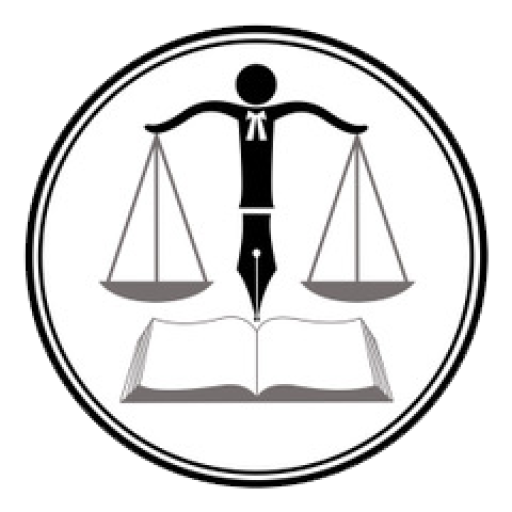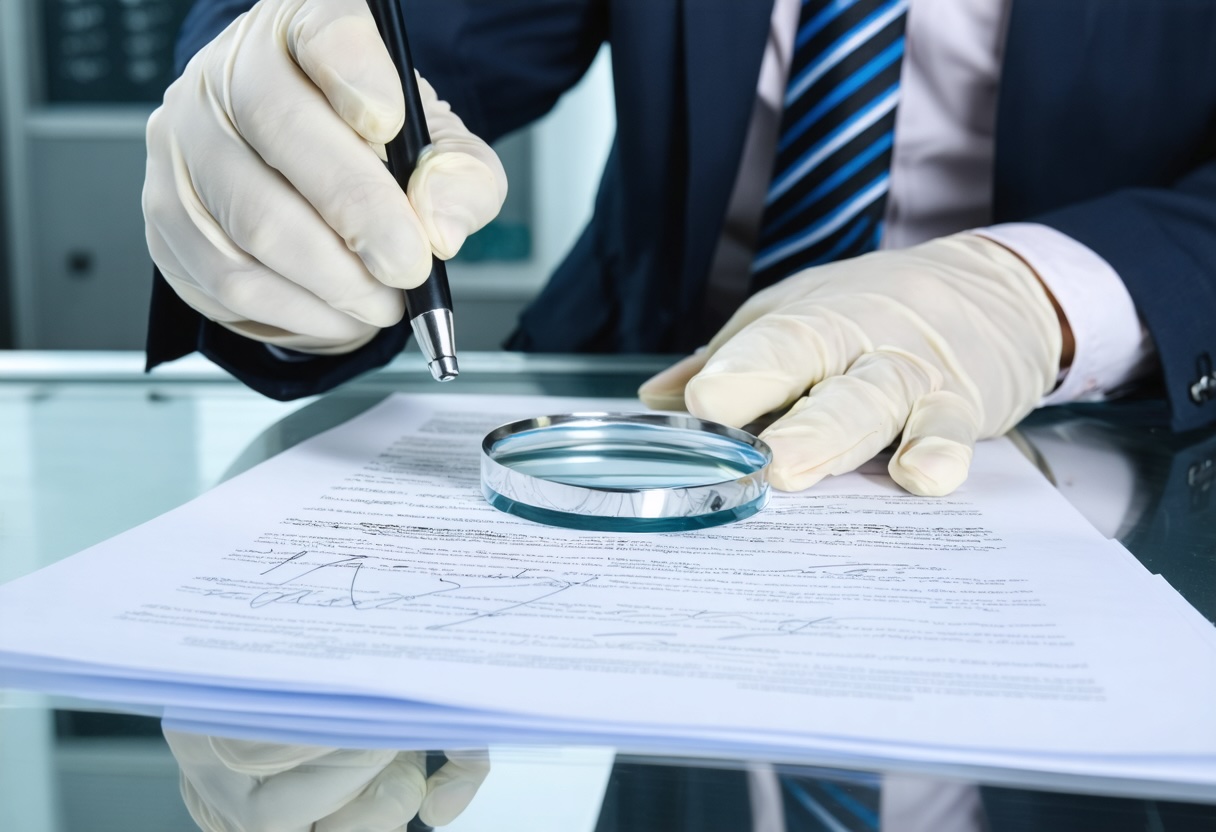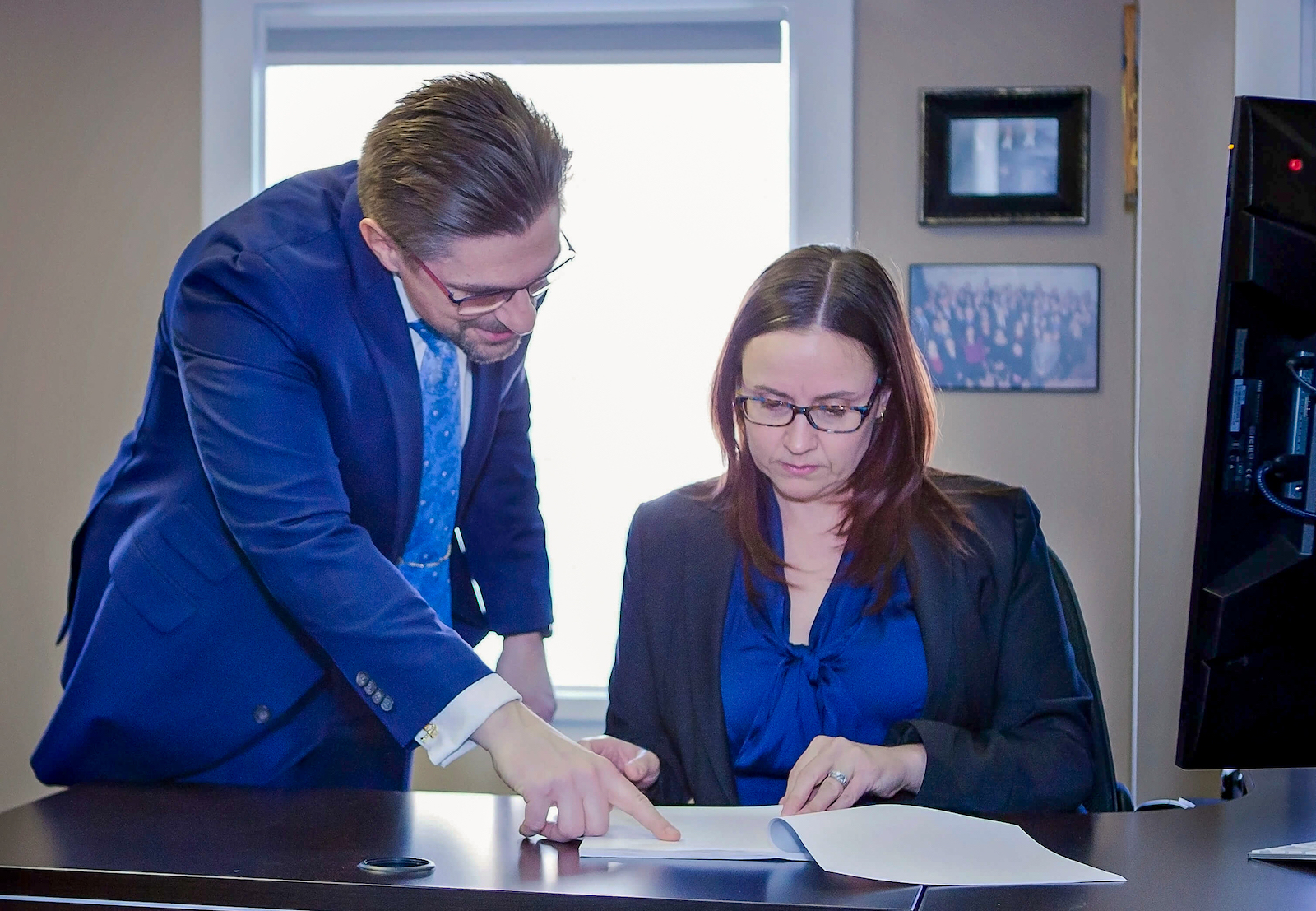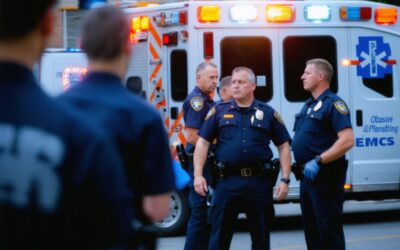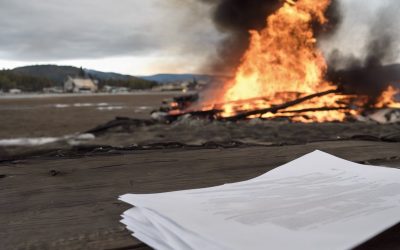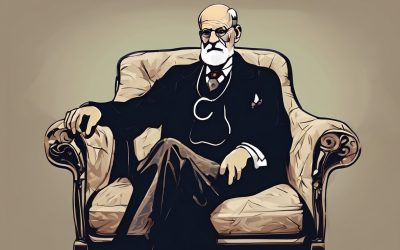This week’s top three summaries: R v Matthews, 2025 ABKB 597: #expert bias, R v RL, 2025 ONCA 691: #acquittal appeal, R v Wilson, 2025 ABCA 337: #contempt
R. v. Matthews, 2025 ABKB 597
[October 14, 2025] Expert Evidence: Experience and Bias [Justice Lisa A. Silver]
AUTHOR’S NOTE: Excluding Expert Evidence for Insufficient Qualification and Apparent Bias
Expert evidence remains a carefully limited exception to the rule against opinion evidence. Before it can be admitted, the trial judge must be satisfied that the proposed witness possesses sufficient expertise and will provide independent, impartial, and unbiased assistance to the court. This case offers a rare but instructive example of expert evidence being excluded on both of these less commonly decisive grounds — qualifications and bias.
The proposed expert, a forensic document examiner, was rejected because the judge found both qualitative and quantitative deficiencies in her training and experience. She had never been qualified as an expert before, had not completed any other document opinions in the year preceding trial, had left her employment with the CBSA where she gained her experience, and had not participated in any updated training or sought certification to validate her knowledge.
The judge also found concerns of bias, noting the expert’s willingness to provide an opinion for the Crown under suboptimal conditions that she could have remedied. She failed to examine the original documents (a key requirement in her discipline), and produced an on-the-spot opinion outside court with limited time for analysis and no peer review.
Takeaway:
The decision underscores that expert witnesses must not only have demonstrable, current expertise but must also act with methodological integrity and independence. Willingness to compromise professional standards to accommodate a party’s request may itself become evidence of bias justifying exclusion.
Introduction
[1] The Crown seeks to admit the opinion evidence of Helen Kolodziejczyk, who analyzed the handwriting of a confessional note found during the investigation.
[4] For reasons to follow, I find that Ms. Kolodziejczyk is not a properly qualified expert in forensic document examination, particularly handwriting comparison analysis, because she lacks the experience expected of a qualified expert, lacks understanding of her role as an expert, and is not able to provide independent evidence.
The Opinion Evidence Rule and Expert Evidence
[6] In our adversarial system, the trier of fact makes findings of fact based on the evidence proffered in court. It is the task of the trier of fact to decide what reasonable inferences, if any, may be drawn from that evidence: R v DD, 2000 SCC 43 at para 49 [DD]. Therefore, witnesses must only testify to the facts “within [their] knowledge, observation and experience”: DD at para 49. A witness may not provide a conclusion or opinion based on their own inferences. This is known as the rule against the admissibility of opinion evidence.
[8] The rules of evidence, however, are replete with exceptions: Graat at p 835. The admissibility of expert opinion evidence is one such exception to the opinion evidence rule: White Burgess Langille Inman v Abbott and Haliburton Co, 2015 SCC 23 at paras 14-15, [2015] 2 SCR 182 [White Burgess].
[9] This exception developed because properly qualified experts have knowledge, experience and expertise that go beyond the trier of fact’s ordinary understanding, knowledge and experience: R v Marquard, 1993 CanLII 37 (SCC), [1993] 4 SCR 223 p 243. As an exception to the general rule, the burden of establishing the admissibility of expert evidence is on the party…
Admissibility Framework: Step One
[15] The tightened and enhanced admissibility framework for expert evidence incorporates the well-known criteria for admissibility from the Mohan decision: White Burgess at para 1. Indeed, the enhanced Mohan criteria is the first step in the admissibility framework: White Burgess at para 23.
[16] The four Mohan criteria are (see White Burgess at para 19):
- Relevancy
- Necessity
- Absence of an exclusionary rule
- Properly qualified expert
[17] The Crown must establish that each of the four criteria are fulfilled on a balance of probabilities: R v Saunders, 2025 MBCA 44 at para 119. Otherwise, the evidence is excluded: R v Evans, 2019 ONCA 715 at para 134.
Logical Relevance
[18] For the first requirement, the proposed expert evidence must be logically relevant to a fact in issue at the trial.
[22] According to Justice Doherty, logical relevance, which is whether the expert evidence as a matter of human experience and logic has some tendency to make a fact in issue more or less likely, reflects the threshold aspect of relevancy in the Mohancriteria. Conversely, legal relevancy, involves a limited weighing of the expert evidence in the cost-benefit analysis found in the judicial discretion to exclude.
[25] In my view, counsel is conflating the two steps of the expert evidence admissibility framework by submitting that legal relevance is a consideration in the Mohan threshold criteria
[30] I therefore find that the first requirement under the Mohan criteria engages logical relevance, which is consistent with the low threshold nature of the Mohan exercise. I will therefore apply this aspect of relevancy in assessing the first threshold requirement under Mohan.
[31] Expert evidence has logical relevance where the proposed evidence has some tendency, as a matter of logic and experience, to make a fact in issue more or less likely: Abbey #1at para 84; J-LJ at para 47. Here, the proposed evidence is on authorship of the handwritten notes found in the dumpster close to CW’s residence. The authorship is relevant because the note contains what is arguably a confession to the shooting of the deceased. Ms. Kolodziejczyk’s evidence, if accepted, would tend to make it more likely than not that Mr. Matthews was the author of the note. As a matter of logic and common sense, the proposed evidence is relevant to the question of who shot the deceased.
Necessity
[32] The second requirement under Mohan is the necessity of the evidence to the trier of fact.The question asked is whether the proposed evidence is “likely to be outside the experience and knowledge of a judge”: Mohan at p 23, quoting R v Abbey, 1982 CanLII 25 (SCC), [1982] 2 SCR 24. The evidence must be more than merely relevant or helpful but “absolute necessity is not required”: R v SKM, 2021 ABCA 246 at para 60 [SKM];DD at para 21.
[34] In this case, Ms. Kolodziejczyk testified about different handwriting techniques and the methodology of examining questioned documents. Her evidence specifically referenced general information on identifying, comparing, and examining documents including handwriting. In this respect, Ms. Kolodziejczyk’s evidence would assist me “to appreciate the technical dimension of the matters in issue”: SKM at para 61; Mohan at p 23
[35] In assessing necessity, I should also consider whether an “ordinary person” is unlikely to form the “correct judgment” without the expert’s assistance: SKM at para 61. In the case of handwriting identification, the trier of fact may draw their own inferences from a comparison of handwriting samples: R v Abdi, 1997 CanLII 4448 (ONCA). Moreover, section 8 of the Canada Evidence Act provides for the identification of handwriting by non-expert witnesses. Our law therefore recognizes that an “ordinary person” can identify handwriting without expert knowledge.
[36] Even so, I acknowledge that some of the information provided by Ms. Kolodziejczyk is outside of my area of understanding. Information provided by Ms. Kolodziejczyk like letter formation and the development of handwriting throughout a person’s lifetime touches on an area of knowledge I simply do not have. This kind of information may be of assistance, together with all the evidence, on the issue of authorship of the handwritten confession. Although the evidence is not absolutely necessary to my decision-making, it is more than merely helpful.
[37] I find the threshold necessity requirement is fulfilled.
Other Exclusionary Rules
[38] The third requirement is whether other exclusionary rules impact the expert’s evidence. I find there are no other exclusionary rules in issue with this evidence. Therefore, the third threshold requirement is fulfilled.
Properly Qualified Expert
Introduction
[39] The fourth requirement, which is the main concern in this admissibility hearing, is whether the expert is a properly qualified expert. I find, for the following reasons, that Ms. Kolodziejczyk is not a properly qualified expert because she is an inexperienced and underqualified forensic document examiner who lacks an understanding of her duty to the court and is unable to give an independent and impartial opinion.
[41] First, the expert must be qualified. This aspect reflects the traditional approach to qualification. In determining this issue, the judge should explore in what way this particular witness is qualified or expressly able to give, not just an opinion, but an expert one.
[42] Second, the qualified expert must be “properly qualified”: White Burgess at para 19. This aspect enhances the meaning of a qualified expert because it reflects the willingness and ability of the qualified expert to provide fair, objective and non-partisan assistance to the court: White Burgess at paras 2 and 53. To fulfill this aspect, the qualified expert must understand their duty and obligation to the court to provide an independent and impartial opinion: White Burgess at para 10. The expert “must be, and be seen to be” independent: White Burgess at para 27 citing National Justice Compania Naviera S.A. v. Prudential Assurance Co., [1993] 2 Lloyd’s Rep. 68 (Q.B.) at p 81.
Ms. Kolodziejczyk’s Background
[45] At the end of her training, Ms. Kolodziejczyk received a certificate from CBSA “certifying” that she completed her training as a forensic document examiner. Ms. Kolodziejczyk is not certified by the American Board of Forensic Document Examiners, which is a rigorous, national, peer reviewed process. When asked about this certification, Ms. Kolodziejczyk admitted she was “not too familiar” with their process of certification because she “wanted to have more case experience before applying.” Ms. Kolodziejczyk further explained that for national certification she would need to complete a series of peer reviewed mock cases. She did not feel she was sufficiently experienced to undertake a “board certified exam.”
[48] Ms. Kolodziejczyk was also questioned on the standards she was expected to follow as a CBSA forensic document examiner. Although Ms. Kolodziejczyk was familiar with the CBSA document containing these standards and appeared to have knowledge and understanding of them, when examined about the actual standards which the CBSA followed, she was less informed.
[49] The standards involve a multi-faceted approach whereby various international and national standards are subsumed. Ms. Kolodziejczyk appeared to have current working knowledge of only the most recent standard. When challenged on her limited knowledge, she maintained that because it was the most recent and most comprehensive document, she did not review the others.
Is Ms. Kolodziejczyk Qualified to Provide an Expert Opinion?
[50] I find that Ms. Kolodziejczyk is not sufficiently qualified to provide an expert opinion. I have qualitative and quantitative concerns with Ms. Kolodziejczyk’s credentials because of her limited training, education, and certification in the field of handwriting analysis and her minimal real world experience in conducting handwriting comparison examinations. I therefore find that Ms. Kolodziejczyk lacks the experience, skills, and knowledge to provide an expert opinion that would assist the court.
[53] The analysis of a person’s qualifications involves both a qualitative and quantitative component. The qualitative element involves an assessment of why the person is an “expert” through a review of the skills, knowledge, and attributes that flows from such a label.
[54] The quantitative assessment involves a measurement of that person’s knowledge, experience, and skills. The question is whether the person is sufficiently proficient in the proposed area of expertise to provide an expert opinion: R v Guilbride et al, 2003 BCPC 0207 at para 10 [Guilbride].
[55] Undoubtedly, Ms. Kolodziejczyk has book knowledge and was able to describe the theory and methodology of conducting handwriting comparisons. However, in this case, training does not amount to expertise because the job of a forensic document examiner is to perform realworld hands-on examinations, then provide a comprehensive written opinion report, and finally, to testify to that opinion in court.
[56] The ability to perform handwriting comparisons is not merely theoretical. It involves an application of theory to a real case situation. Here, the only handwriting comparison Ms. Kolodziejczyk ever conducted as a “certified” forensic document examiner was the case before me.[Emphasis by PJM]
[57] As part of the analysis in this case, Ms. Kolodziejczyk provided two opinions. The first opinion, conducted well over a year ago in January of 2024, was based on a digitized version of the handwritten note. That examination and analysis took Ms. Kolodziejczyk several hours over the course of several days. The written opinion she rendered was peer reviewed in accordance with the practice at CBSA
[58] Ms. Kolodziejczyk’s second opinion was conducted only two days before her testimony in a break-out room just outside of the courtroom. This further examination was of the original document. According to Ms. Kolodziejczyk, she was asked to provide another opinion because her first opinion, provided in January of 2024, was limited by the examination of a copy.
[59] The second examination took less than an hour. At the time of providing this second opinion, Ms. Kolodziejczyk had not practiced in the field for almost a year and was no longer employed by CBSA.
[60] Ms. Kolodziejczyk provided the second opinion without the benefit of peer review. According to Ms. Kolodziejczyk, the requirement for peer review of an opinion was best practice and not mandatory. However, all the examinations Ms. Kolodziejczyk conducted while employed by CBSA were peer reviewed.
[61] Ms. Kolodziejczyk admitted that at the time she provided this second opinion, she had not participated in any continuing education. She did not apprise herself of what was new in her field other than asking a former colleague from CBSA if there was anything new of interest. Instead, Ms. Kolodziejczyk borrowed a textbook from CBSA and what appeared to be a “how to” book to refresh her memory of the key informational aspects of conducting a handwriting comparison.
[62] Notably, because Ms. Kolodziejczyk was no longer employed as a document examiner, at the time she gave her evidence before me, she had not participated in her yearly CBSA competence review. The Crown argued that this was done yearly and therefore the fact she had not been assessed in a year was not significant. In my view, this deficiency is a factor, albeit not a determinative one, that impacts Ms. Kolodziejczyk’s qualification as an expert.
[63] I appreciate that CBSA was aware Ms. Kolodziejczyk was providing another opinion and was testifying in court. However, without more, I am left with the fact that Ms. Kolodziejczyk at the time she rendered her second opinion was no longer employed as a forensic document examiner, had not received any continuing education in the area including any updated selfdirected education, and had not conducted any further handwriting comparisons but for the one at bar[Emphasis by PJM]
[64] Moreover, the certificate presented by Ms. Kolodziejczyk merely “certifies” that Ms. Kolodziejczyk completed her in house training as a CBSA forensic document examiner. The document does not signify that Ms. Kolodziejczyk is an expert in the field nor does it certify that Ms. Kolodziejczyk is a qualified forensic document examiner outside of her employment.[Emphasis by PJM]
[65] Significantly, Ms. Kolodziejczyk herself believed she was inexperienced which was why she did not seek national certification through the American Board of Forensic Document Examiners. [Emphasis by PJM]
[66] I place little weight on Ms. Kolodziejczyk’s membership in the Canadian Society of Forensic Scientists. There was no evidence of what barriers there were to membership other than a letter of recommendation from a colleague who was already a member. For instance, there was no certification or proficiency testing done before membership. There were no formal designations connected to membership. The member simply chose whatever topic area was of interest to them.
[67] Not only does Ms. Kolodziejczyk lack real world experience and particular recognition in her field, but she also lacks recognition as a qualified expert in court. Ms. Kolodziejczyk has never been qualified by a judge. I am mindful an expert will always have a first time when they are qualified to give an expert opinion. However, in those instances, the witness would have likely continued to build their expertise in the field between the first case they conducted and their testimony in court. Here, Ms. Kolodziejczyk had no further experience conducting handwriting comparisons after she rendered her opinion in this case. This raises significant concerns with Ms. Kolodziejczyk’s overall qualifications as an expert.
[73] I am also concerned Ms. Kolodziejczyk has no memory of the other cases she conducted during the year she was a CBSA document examiner except the one at bar and a vague recollection that one of the other cases likely involved a review of an identification card. I would expect a qualified expert to have a good working knowledge of the cases for which they had previously opined on.
[74] Moreover, Ms. Kolodziejczyk is being presented not just as an expert document examiner but a forensic one. An expert who works forensically in the field is making an assessment and applying their knowledge and expertise in the context of the law for use in the courts. Although a forensic expert is not necessarily one who has testified previously in court, such an expert is necessarily someone who is aware of the legal principles relevant to her area of expertise and works within those parameters.[Emphasis by PJM]
[75] Although Ms. Kolodziejczyk was not directly asked what she understood her forensic designation meant, I can reasonably infer from her evidence that she is deficient in this knowledge. For instance, Ms. Kolodziejczyk understood the need to keep accurate notes yet she did not understand the importance of providing those notes to the Crown and the defence. I will have further comment to make on this because in my view this lack of understanding of what her role is as a forensic expert also impacts the second aspect of the fourth Mohan criteria, which is whether she is a properly qualified expert.[Emphasis by PJM]
[76] I therefore find that Ms. Kolodziejczyk is not a qualified expert.
[77] Although I have found Ms. Kolodziejczyk is not qualified to give expert evidence in this case, because the fourth Mohan criteria require a properly qualified expert, I will continue the analysis by assessing Ms. Kolodziejczyk’s ability to understand her duty toward the court as an expert witness to give impartial, unbiased, and independent evidence.
Is Ms. Kolodziejczyk Properly Qualified?
[78] I find that Ms. Kolodziejczyk does not understand her duty to provide an independent opinion to assist the court. Therefore, even if Ms. Kolodziejczyk had the qualifications for an expert in her field, she is unable to provide impartial and independent evidence.
[79] The second aspect of the fourth Mohan criteria emphasizes that even if an expert has sufficient qualifications, the expert must still be “properly” qualified. This assessment focuses on whether the qualified expert understands their duty to the court and are willing and able to provide an independent, impartial, and unbiased opinion. The expert is therefore providing an opinion to assist the trier of fact not to advocate for or promote any party in the litigation.
[80] Typically, this aspect of the fourth Mohan criteria will not be an issue. The threshold for showing that a qualified expert understands and is willing and able to fulfill their duty to the court is low: White Burgess at para 49. For instance, the threshold is typically fulfilled when an expert testifies that they are willing and able to provide impartial, unbiased and independent evidence: White Burgess at para 47.
[81] Once the expert attests to understanding their duty and their willingness and ability to fulfill it, the burden shifts to the opposing party to establish a realistic concern that the expert is impartial, unbiased or lacks independence: White Burgess at para 48. This requires a real concern based in the evidence. For example, merely the fact that the expert is paid by one party does not raise a realistic concern the expert favours that party and cannot give an independent or impartial opinion: White Burgess at para 49.
[82] If the opposing party can establish a realistic concern then the burden remains on the party introducing the expert evidence to show on a balance of probabilities that the expert is impartial, unbiased, and independent: White Burgess at para 48.
[83] The Defence argued that the Crown has not fulfilled the threshold requirement because Ms. Kolodziejczyk never attested that she understood her duty to the court. Ms. Kolodziejczyk was asked and did agree that her professional obligations required her to provide an unbiased, impartial, and independent opinion. This obligation, however, was never tied directly to her evidence in court and her duty to the trier of fact.[Emphasis by PJM]
[84] I agree that this omission suggests Ms. Kolodziejczyk does not understand her duty to the court particularly because she has never testified as an expert previously and her understanding of what it means to be a forensic expert is limited. Still, the threshold is “not particularly onerous” and an inference could be drawn that Ms. Kolodziejczyk is aware an “expert must be fair, objective and non-partisan”: White Burgess at paras 46 and 49.[Emphasis by PJM]
[85] However, Ms. Kolodziejczyk’s awareness of this duty is not enough to discharge the burden because the defence raised realistic concerns with Ms. Kolodziejczyk’s independence and impartiality: White Burgess at para 48. I find that these concerns are fundamental to Ms. Kolodziejczyk’s ability to provide expert evidence. Therefore, even if Ms. Kolodziejczyk was a qualified expert, she does not meet the threshold for the fourth Mohan requirement and her evidence is inadmissible.
[86] According to Justice Cromwell in White Burgess, independence and impartiality of an expert means the expert is expressing “their own unbiased professional opinion” and the opinion is “the product of their own, independent conclusions based on their own knowledge and judgment”: White Burgess at para 11. In other words, the expert’s opinion must not be influenced “as to form or content by the exigencies of litigation”: White Burgess at para 27 citing National Justice Compania Naviera S.A. . Prudential Assurance Co, [1993] 2 Lloyd’s Rep. 68 (Q.B.) at p 81.
[87] There is no doubt that an expert is in a unique position in our adversarial system. An expert is at once both a witness for one party in the litigation and at the same time there to assist the court as an independent actor. Justice Slatter of our court of appeal aptly characterized the multiplicity of often conflicting roles of an expert, involving their obligations to their client, to their professional organizations and to the court: Deloitte & Touche LLP v Institute of Chartered Accountants of Alberta, 2008 ABCA 162 at para 96 (per Slatter J.A., dissenting) [Deloitte].
[88] These conflicting roles can lead to conscious or subconscious litigation influence or, what the jurist Adam Dodek calls “adversarial bias.” According to Dodek, adversarial bias arises from the natural tendency for an expert to want to “please” the party who retained them: Adam Dodek, Ethics of the Expert Witness in the Science Manual for Canadian Judges, Chapter 4 at p 4.[Emphasis by PJM]
[89] I find that Ms. Kolodziejczyk’s ability to provide an opinion free of litigation influence and adversarial bias is compromised because she chose “pleasing” her client over her professional obligations.[Emphasis by PJM]
[90] A good example of Ms. Kolodziejczyk’s preference for her client’s instructions over her professional duty is found in Ms. Kolodziejczyk’s agreement to provide the Crown with a second opinion on the authorship of the handwritten note. The first opinion was provided January 22, 2024, over 18 months before the trial was scheduled to start in September of 2025. In Ms. Kolodziejczyk’s opinion there was a strong probability the writer of the specimen material, which was shown at trial to be written by Mr. Matthews, was also the writer of portions of the handwritten note containing the confession. Ms. Kolodziejczyk indicated that her opinion was “limited” because she did not examine the original document. Indeed, in accordance with her professional standards and ethical obligations, a document examination should be made of an original, not a copy.[Emphasis by PJM]
[91] Ms. Kolodziejczyk testified that in January of 2024, she asked Detective Pearson, the investigating officer, if the original was “available.” Detective Pearson told her the original was not available because the RCMP had the document. Later, in cross examination, Ms. Kolodziejczyk maintained that it would be professionally “negligent” not to look at the original if it was available. She also testified that because rendering an opinion on the original was “ideal,” a professional should “always” ask for the original.[Emphasis by PJM]
[92] There is no doubt that Ms. Kolodziejczyk asked for the original, but in my view her professional obligations did not end there. Ms. Kolodziejczyk did not go on to ask the Detective when the original would be available so she could render an unrestricted opinion that could be relied upon nor did she later follow up on the document’s availability. Moreover, Ms. Kolodziejczyk did not advise Detective Pearson that her opinion would be compromised without examining the original, she did not insist on examining the original before giving an opinion, nor did she hold off giving her opinion until she could view the original. Instead, Ms. Kolodziejczyk gave a less than “ideal” opinion simply because the client instructed her to do so. [Emphasis by PJM]
[93] Because Ms. Kolodziejczyk gave a limited opinion without the original document, further difficulties arose. Ms. Kolodziejczyk’s pathway to providing a second opinion on the original document can only be described as unusual. Ms. Kolodziejczyk viewed the original document only a couple of days before her evidence in a room just outside of the inner doors of the courtroom. The document was taken from the custody of the court without notice to defence counsel, without permission from the court, and without a formal application under the Criminal Code. The document was not viewed in a laboratory or a document examination room. Although Ms. Kolodziejczyk had some devices to assist her, she did not have the full benefit of the equipment found in a document examiner’s space. At this point, Ms. Kolodziejczyk was not employed by CBSA.
[94] What is most concerning about this scenario is that Ms. Kolodziejczyk agreed to conduct a second opinion in these circumstances. Moreover, the opinion was rendered without peer review, an important safeguard built into the process to give those relying on the opinion some threshold assurance of the quality, accuracy, and inherent reliability of the opinion.[Emphasis by PJM]
[95] I would expect an expert to refuse to give an opinion in these circumstances. In my view, the scenario compromised Ms. Kolodziejczyk’s ability to give a fair, objective, and impartial opinion.[Emphasis by PJM]
[96] I find that the circumstances surrounding the second opinion confirms Ms. Kolodziejczyk’s allegiance to the client over her professional obligations. Not only does her actions show adversarial bias but it also shows that Ms. Kolodziejczyk does not understand her “paramount” allegiance is to the court to provide independent evidence: Deloitte at para 96.
[97] I am also concerned that Ms. Kolodziejczyk agreed to give a second opinion when she was no longer employed as a forensic document examiner and had not been in that position for a year. An expert must recognize when a matter is no longer within their expertise. Ms. Kolodziejczyk was no longer practicing as an examiner, had not maintained her proficiency nor her knowledge of the subject area in accordance with best practices and the professional standards, and yet she agreed to render an opinion, in a summary fashion, for a serious criminal matter. She also agreed to give an opinion when she knew it could not be peer reviewed contrary to best practices.
[98] In my view, this shows Ms. Kolodziejczyk was willing to please the party who retained her at all costs. Instead of showing her independence by declining to render an opinion she knew was not in compliance with standards, Ms. Kolodziejczyk complied, without question, the request of the party who retained her.
[99] I find Ms. Kolodziejczyk’s actions shows a lack of understanding of the role and obligations of a properly qualified expert because consciously or subconsciously she has “overlooked” her “primary duty” to assist the court: Glenn R. Anderson, Expert Evidence, 2d. (Toronto: Lexis Nexis, 2009) 341 quoted with approval in Posthumous v. Foubert, 2009 MBQB 206, 243 Man. R. (2d) 143 at para 43.
[100] I also find that Ms. Kolodziejczyk tended to overstate her knowledge and qualifications. This too shows a form of conscious or subconscious bias, I will call “acceptance bias”. Ms. Kolodziejczyk wanted to be accepted as an expert and therefore gave evidence in a way to ensure she would be accepted as one. [Emphasis by PJM]
[102] Ms. Kolodziejczyk also overstated her knowledge. A good example was Ms. Kolodziejczyk’s knowledge of the CBSA standards. Ms. Kolodziejczyk had only reviewed the most recent comprehensive document that formed the multi-standard approach formulated by the CBSA. Ms. Kolodziejczyk tried to dismiss her lack of familiarity with the other standards as unnecessary and unneeded.
[103] In my view, the CBSA standards include all the subsumed documents, not just the most recent or the most comprehensive. It was Ms. Kolodziejczyk’s duty and obligation as a CBSA forensic document examiner to have thorough understanding and knowledge of all the documents, not just the one she believed was most pertinent. This showed a lack of understanding of what her obligations are as a CBSA forensic document examiner and a lack of knowledge of those standards. It also showed Ms. Kolodziejczyk’s preference for her own view of what is required from forensic document examiner. Most troubling, instead of admitting gaps in her knowledge, Ms. Kolodziejczyk demonstrated she was willing to compromise her professional obligations to be accepted as an expert.
Comments on Gatekeeper Step Two
[104] I appreciate that because the Crown did not satisfy me on a balance of probabilities that Ms. Kolodziejczyk’s evidence was admissible, the analysis is at an end and there is no reason to consider the gatekeeper discretion to exclude. However, I would like to briefly comment on this aspect of the expert evidence admissibility test because this case is an example of the diligence required in assessing expert evidence.
[105] Ms. Kolodziejczyk was articulate and spoke authoritatively on the subject area. Yet, as highlighted through cross examination, there were significant frailties with Ms. Kolodziejczyk’s evidence because of the concerns I outlined earlier in this decision. There were also other frailties explored by the defence in cross-examination that could have impacted the probative value of Ms. Kolodziejczyk’s opinion.
[106] For instance, there was some evidence that Ms. Kolodziejczyk showed confirmation bias through her approach to the handwriting analysis because she assumed that if she received better sample writing from Mr. Matthews, her opinion that Mr. Matthews authored the note would be stronger. In other words, she was not open to the possibility that her opinion would change. There was also some evidence that Ms. Kolodziejczyk failed to record all the limitations with her first opinion in her original report. These are just examples of the potential concerns with the weight of Ms. Kolodziejczyk’s evidence.
[107] In short, although Ms. Kolodziejczyk seemed “solid and impartial,” her evidence was potentially flawed due to the vagaries of litigation: White Burgess para 12 and Goudge Report at para 105. This concern goes to the very heart of the expert evidence admissibility framework and wh
Conclusion
[108] The Crown’s application to admit the evidence of Ms. Kolodziejczyk is dismissed.
R v RL, 2025 ONCA 691
[October 10, 2025] Crown Appeal from Acquittal: Reasons for Decision [J. Copeland, P.J. Monahan, and L. Madsen JJ.A.]
AUTHOR’S NOTE: Crown Appeals and the Limits of “Insufficient Reasons” Arguments
The Crown’s right of appeal in criminal cases is strictly limited to questions of law. This decision serves as a concise reminder that attempts to disguise factual or credibility disputes as alleged “errors of law” — particularly through arguments of insufficient reasons — will rarely succeed.
Here, the Crown appealed an acquittal on the basis that the trial judge’s reasons were allegedly inadequate in explaining a credibility assessment. The Court of Appeal rejected this argument, emphasizing that credibility findings are quintessentially factual, and disagreement with a trial judge’s conclusions cannot be reframed as a legal insufficiency in reasons.
Both the Crown and defence occasionally fall into the trap of recasting credibility rulings as reasoning errors. However, for the Crown, the restricted statutory right of appeal under s. 676(1)(a) of the Criminal Code makes this line of argument particularly weak. Absent a demonstrable error of law — such as a misdirection on a legal principle or complete failure to address an essential issue — the appellate court will not intervene.
Takeaway:
On appeal, credibility disputes are not questions of law. The Crown’s limited right of appeal cannot be expanded by rebranding factual disagreements as insufficient reasons — a principle defence counsel can readily invoke to fend off such arguments.
[1] The Crown appeals from the respondent’s acquittal on a charge of sexual assaul
[2] The Crown argues that the trial judge’s reasons are insufficient as that concept is defined in R. v. R.E.M., 2008 SCC 51, [2008] 3 S.C.R. 3, and R. v. Sheppard, 2002 SCC 26, [2002] 1 S.C.R. 869.
[3] …Appellate intervention is only warranted where the insufficiency of reasons prevents meaningful appellate review: Sheppard, at paras. 25-26, 28, and 55; R.E.M., at para. 15; R. v. G.F., 2021 SCC 20, [2021] 1 S.C.R. 801, at paras. 70, 74-75. An appellate court must take a functional approach to the sufficiency of reasons, and review a trial judge’s reasons in the context of the record and the live issues at trial: R.E.M., at paras. 16, 35; G.F., at paras. 69-70. In short, to be sufficient, reasons must make clear what was decided and why, and the logical connection between the two: R.E.M., at paras. 17-18.
[4] …However, unlike the accused’s right of appeal from conviction, the Crown’s right of appeal is limited to questions of law alone: Criminal Code, R.S.C. 1985, c. C-46, s. 676(1)(a). Whether a trial judge’s reasons acquitting an accused are sufficient must be assessed in light of the Crown’s limited right of appeal: R. v. Walker, 2008 SCC 34, [2008] 2 S.C.R. 245, at para. 21. In the words of Binnie J. in Walker, at para. 2:
Caution must be taken to avoid seizing on perceived deficiencies in a trial judge’s reasons for acquittal to create a ground of “unreasonable acquittal” which is not open to the court under the provisions of the Criminal Code[.][Emphasis by PJM]
[5] Because of the Crown’s burden to prove the elements of the offence beyond a reasonable doubt, an acquittal, unlike a conviction, can be based on an absence of evidence or on a trial judge concluding that one or more elements of the offence were not proven to the criminal standard: Walker, at para. 22; R. v. Aiken, 2021 ONCA 298, 155 O.R. (3d) 413, at paras. 43-44. In addition, in a trial that turns on credibility, like this one, a reasonable doubt can arise when the trial judge is unable to resolve conflicting evidence and does not know who to believe: R. v. W.(D.), [1991] 1 S.C.R. 742, at pp. 757-58; R. v. Challice (1979), 45 C.C.C. (2d) 546 (Ont. C.A.), at pp. 556-57. In the context of a Crown appeal from an acquittal, reasons will be insufficient if they fail to explain the basis for the trial judge being left with a reasonable doubt.[Emphasis by PJM]
[6] Having considered the trial judge’s reasons in the context of the evidence and live issues in this trial, we are not persuaded that the trial judge’s reasons are insufficient. The reasons meet the requirements set out in R.E.M. and Sheppard.
[7]…We note that the trial judge’s self-instruction on the basic legal principles of the presumption of innocence, the Crown’s burden of proof, the meaning of the reasonable doubt standard of proof, and how the reasonable doubt standard is to be applied in cases that turn on credibility is comprehensive and free from error. Importantly, she instructed herself on the principles from W.(D). and that the assessment of conflicting versions of events is not to be approached as a credibility contest.
[8] The trial judge then turned to her analysis. In our view, the trial judge’s reasons disclose the following path
[9] After considering the various challenges raised by the defence to the complainant’s credibility and reliability of the complainant’s evidence, the trial judge found the complainant to be a credible witness. In making this finding in the earlier portion of her analysis, the trial judge did not assess that credibility finding as against the Crown’s burden of proof beyond a reasonable doubt. She addressed that near the end of her reasons.
[10] The trial judge then considered the respondent’s version of events as set out in Snapchat text messages entered at trial by the Crown. Although the respondent did not testify, to the extent that the text messages entered into evidence by the Crown contained an exculpatory version of events, the trial judge was required to consider whether that version raised a reasonable doubt in the context of the evidence as a whole: R. v. B.D., 2011 ONCA 51, 266 C.C.C. (3d) 197, at para. 114.
[11] The trial judge considered the Crown’s argument that the respondent’s texts contained inconsistent versions of events, some of which the Crown argued were inculpatory. She also noted that the record of the texts was incomplete, missing three audio messages and the beginning of the text exchange.
[12] In the trial judge’s view she was left with two versions of events – the complainant’s and the respondent’s from the texts. She concluded: “I am unable to determine on the criminal standard, beyond a reasonable doubt, that the accused is guilty.”
[13] The trial judge’s reasons explained, with reference to the trial evidence, why she reached the conclusion that the Crown had not met its burden. Although the ultimate conclusion is brief, the trial judge’s reasons explain what was decided and why, the logical link between the “what” and the “why”, and permit meaningful appellate review. Her reasons make clear that she was left with a reasonable doubt because, faced with the complainant’s version of events and the exculpatory version in the respondent’s texts, she did not know who to believe. She came to this conclusion having considered the whole of the evidence, including that she found the complainant generally credible; that the respondent gave inconsistent versions in the texts, but one that was exculpatory; and that the record in the text exhibits was incomplete.[Emphasis by PJM]
[14] The trial judge’s reasons could have been clearer. She gave them orally and they are relatively brief. But they are sufficient to understand why she was left with a reasonable doubt and to permit appellate review…
[15] The appeal is dismissed.
